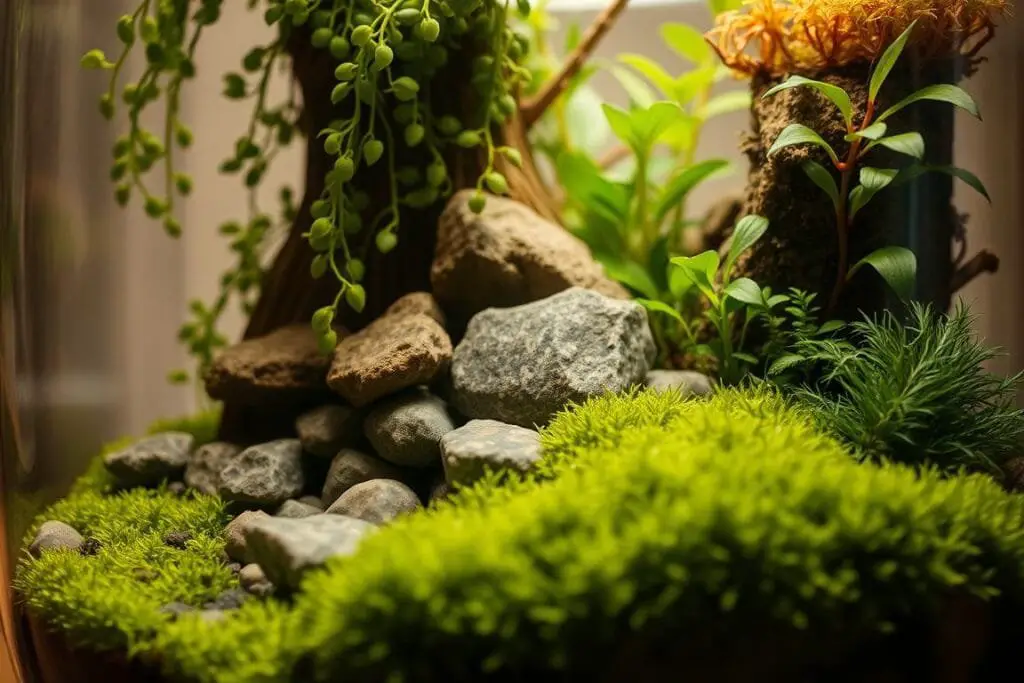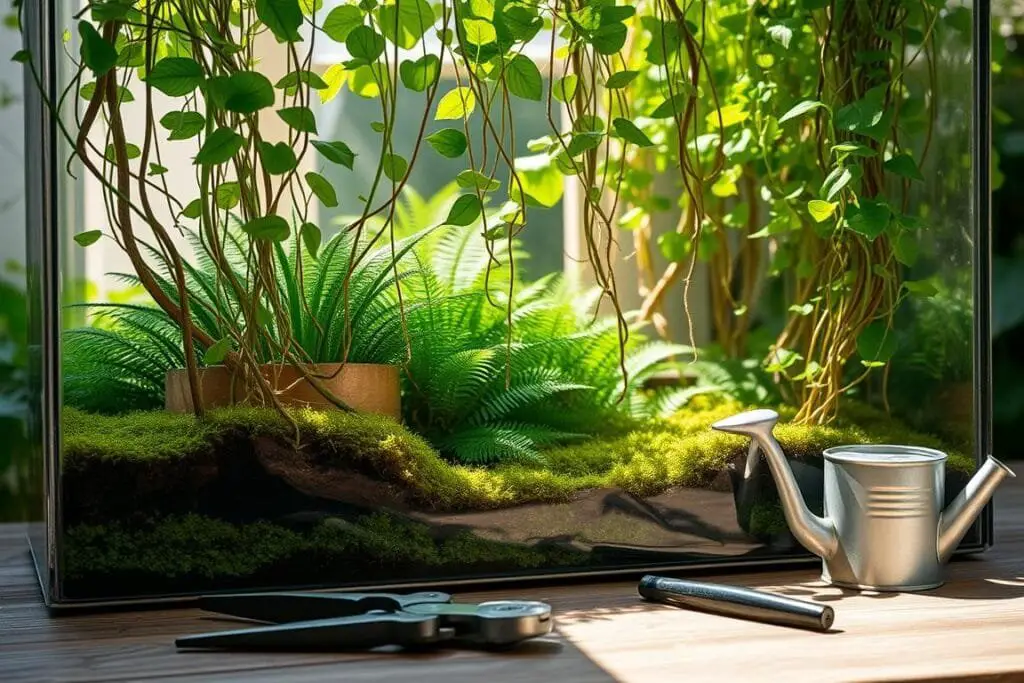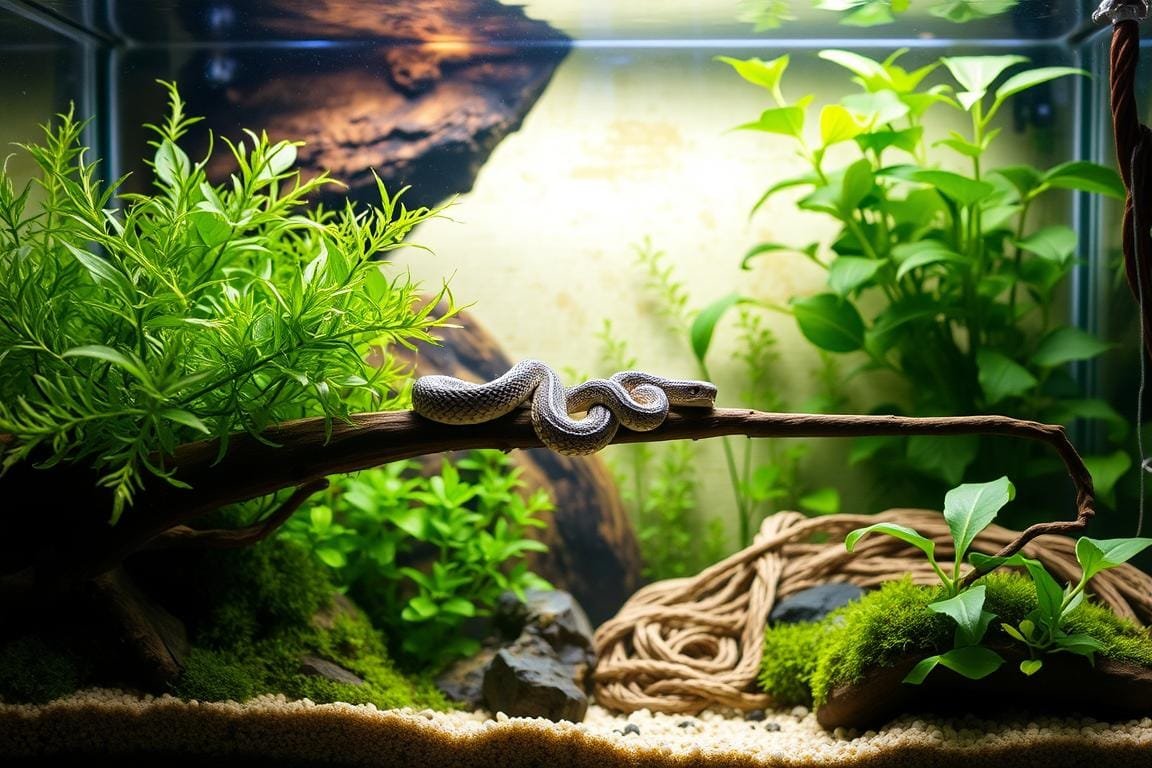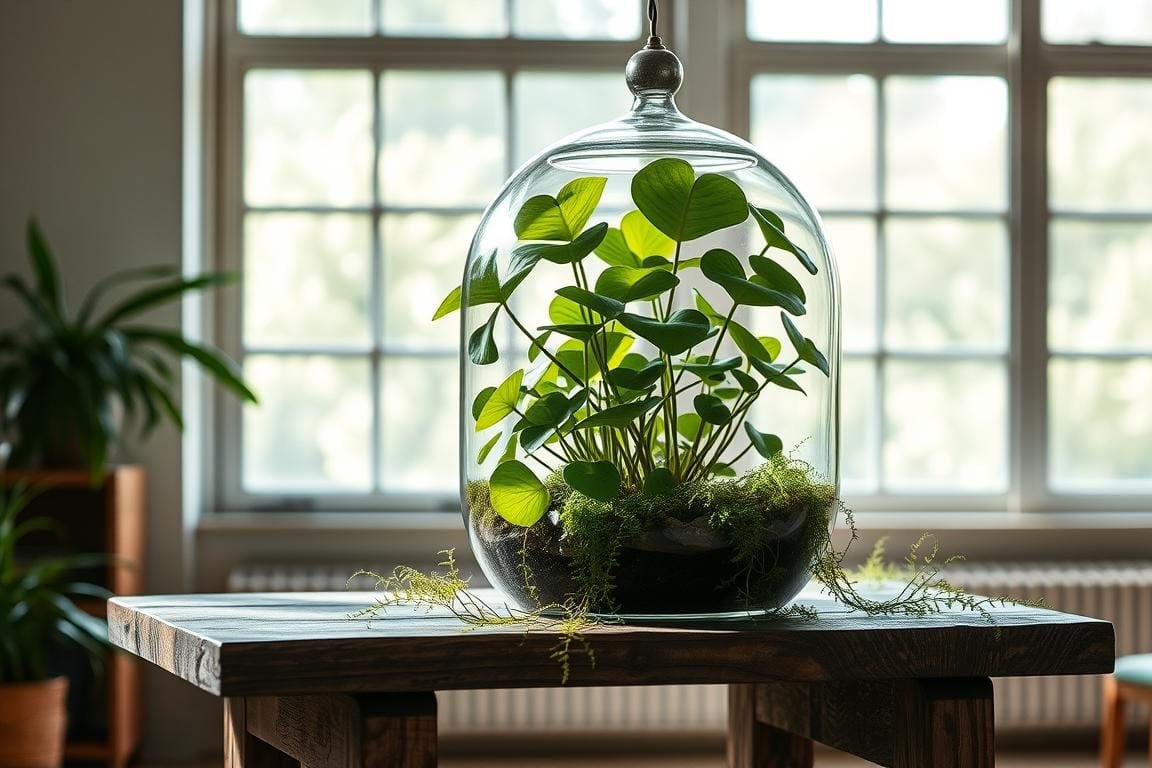Imagine a tiny, self-sustaining world where greenery thrives with minimal effort. That’s the magic of a terrarium—a glass container that blends nature and design into one captivating display. These miniature ecosystems are perfect for small spaces, offering endless ways to personalize your room’s aesthetic while keeping upkeep simple.
Why choose a spider plant for this project? Known for its air-purifying qualities and adaptability, this resilient foliage adds texture and movement to enclosed setups. Its arching leaves create visual interest, making it ideal for artful arrangements in open or semi-open containers. Plus, its low-maintenance needs align perfectly with the hands-off approach terrariums often require.
Trendy yet timeless, these enclosed gardens have surged in popularity as urban dwellers seek creative ways to bring nature indoors. Whether you opt for a geometric vase or a vintage jar, the design possibilities reflect your unique style. For those new to spider plant care, terrariums simplify watering and light management—key factors for long-term success.
In this guide, you’ll discover how to craft and maintain a thriving display. From selecting the right soil to balancing humidity, we’ll cover everything you need to turn glass into a living masterpiece.
Understanding Terrarium Basics and Design
A terrarium combines art and ecology in a glass enclosure, creating a living snapshot of nature. These miniature gardens thrive through a delicate balance of light, moisture, and airflow. Choosing the right setup ensures your greenery flourishes while reflecting your creative vision.
What Is a Terrarium?
Think of it as a self-contained ecosystem. Plants recycle moisture through condensation, reducing the need for frequent watering. Three main types exist:
- Closed: Sealed containers trap humidity, perfect for ferns or mosses.
- Semi-open: Partial lids allow airflow for species needing moderate moisture.
- Open: Ideal for succulents, these prevent excess dampness.
Exploring Different Terrarium Styles
Your container shapes the aesthetic. Geometric glass vases suit modern spaces, while apothecary jars add vintage charm. Layer soil and stones for drainage, then add decorative touches like driftwood or colored sand.
Designs range from jungle-like clusters to sleek, single-species displays. The key? Match your plant choices to the container’s environment. For example, air plants thrive in open designs with bright, indirect light.
Optimal Conditions for Spider Plant in Terrarium
Crafting the perfect environment starts with understanding your green companion’s core needs. Let’s break down the essentials to help your setup flourish effortlessly.
Ideal Light, Water, and Soil Choices
Bright, indirect light keeps foliage vibrant without scorching leaves. Place your display near east-facing windows or under artificial grow lights for consistent exposure.
Use a fast-draining potting mix blended with perlite to prevent soggy roots. Adding a layer of activated charcoal beneath the soil filters impurities and keeps odors at bay. Water sparingly—overwatering is the top cause of root rot in enclosed spaces.
Check moisture by pressing a finger into the soil. If the top inch feels dry, add a tablespoon of water using a narrow-spout bottle. This precision prevents oversaturation.
Choosing the Right Container and Decor
Pick a vessel with enough height for vertical growth. Wide-mouth jars simplify planting, while geometric designs add modern flair. Ensure drainage holes or a gravel base to manage excess liquid.
Decorative elements like smooth stones or miniature figurines personalize your creation. Just avoid overcrowding—these resilient plants need room to stretch their roots. Balance aesthetics with functionality for a display that thrives as beautifully as it looks.
Step-by-Step Guide to Setting Up Your Terrarium

A well-structured terrarium begins with careful layering. These foundational steps ensure proper drainage and airflow, creating a healthy home for your greenery. Let’s walk through the essentials to build a display that’s both functional and eye-catching.
Building the Layered Base
Start with a 1-inch gravel layer at the bottom for drainage. Add a thin sprinkle of activated charcoal to filter impurities. Next, place a mesh screen or sphagnum moss over the charcoal to separate it from the potting mix.
Use a lightweight, well-draining soil blend. Aim for a layer twice as deep as the root ball of your chosen foliage. This setup prevents waterlogging while giving roots space to expand.
Positioning Your Spider Plant
Gently loosen the roots before placing them in the center of the container. Ensure the crown sits slightly above the soil line to avoid rot. Pat the mix firmly around the base to stabilize the plant without compacting the dirt.
Adding Creative Finishing Touches
Top the soil with decorative pebbles or polished stones for texture. Miniature figurines or preserved moss add whimsy. For inspiration on expert layering techniques, explore trusted gardening resources.
Keep these tips in mind:
- Leave 25% of the vessel empty for airflow
- Use long tweezers to arrange small elements neatly
- Wipe glass walls with a microfiber cloth after watering
Expert Tips for Watering, Lighting, and Maintenance

Keeping your miniature garden thriving requires a blend of observation and gentle care. Regular checks and small adjustments prevent common issues like mold or leggy growth. Let’s explore simple habits to preserve your ecosystem’s balance.
Maintenance Best Practices
Water sparingly—a common mistake is overhydrating. Use a syringe or spray bottle to add just enough moisture to dampen the topsoil. Wait until the substrate feels dry 1 inch deep before reapplying. This mimics natural rainfall patterns, reducing rot risks.
Rotate the container every two weeks to ensure even light distribution. If leaves start yellowing, move it farther from direct sunlight. Seasonal changes may require shifting its position—winter months often call for brighter spots.
Refresh the soil annually by replacing the top layer with fresh mix. Activated charcoal mixed into the base layer keeps the environment fresh by absorbing toxins. Trim brown leaf tips with clean scissors to maintain vibrant foliage.
Quick routines to adopt:
- Wipe condensation from glass walls each morning
- Remove fallen debris promptly to prevent decay
- Test airflow by occasionally opening closed designs
Final Thoughts on Building Your Terrarium Masterpiece
Crafting a living work of art starts with blending science and imagination. By focusing on indirect light, well-draining soil, and mindful watering, you create a stable foundation for growth. Add personality through decorative stones or minimalist layouts—your style shapes the story.
Remember, success lies in balance. Too much moisture? Roots suffer. Too little airflow? Mold creeps in. Observe your tiny ecosystem weekly, adjusting care as seasons change. Share photos of your creation online—every design inspires someone new.
Ready to start? Grab a glass vessel, channel your inner artist, and let nature guide your hands. Whether it’s your first attempt or fiftieth, each terrarium reflects a unique journey. Happy building!





